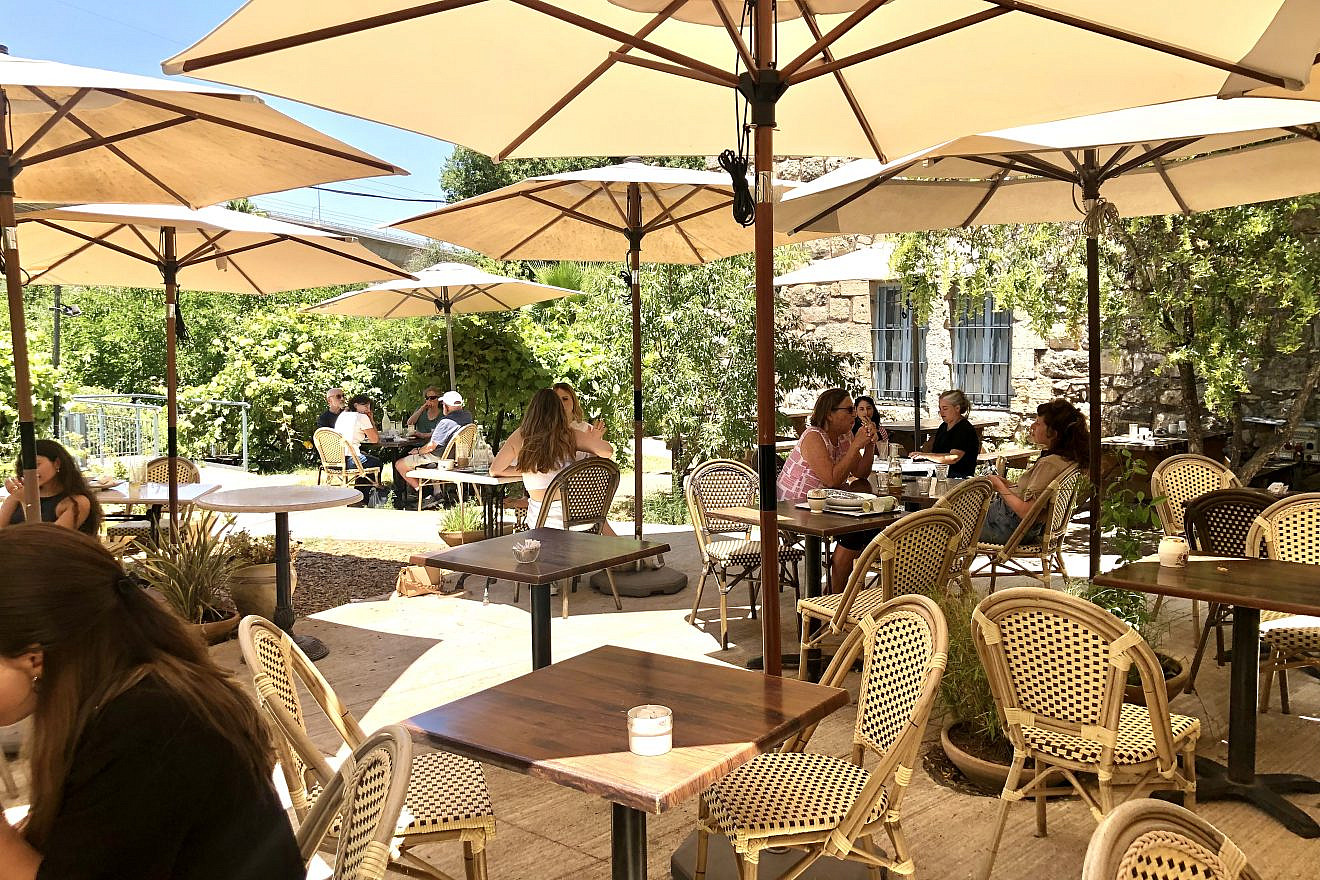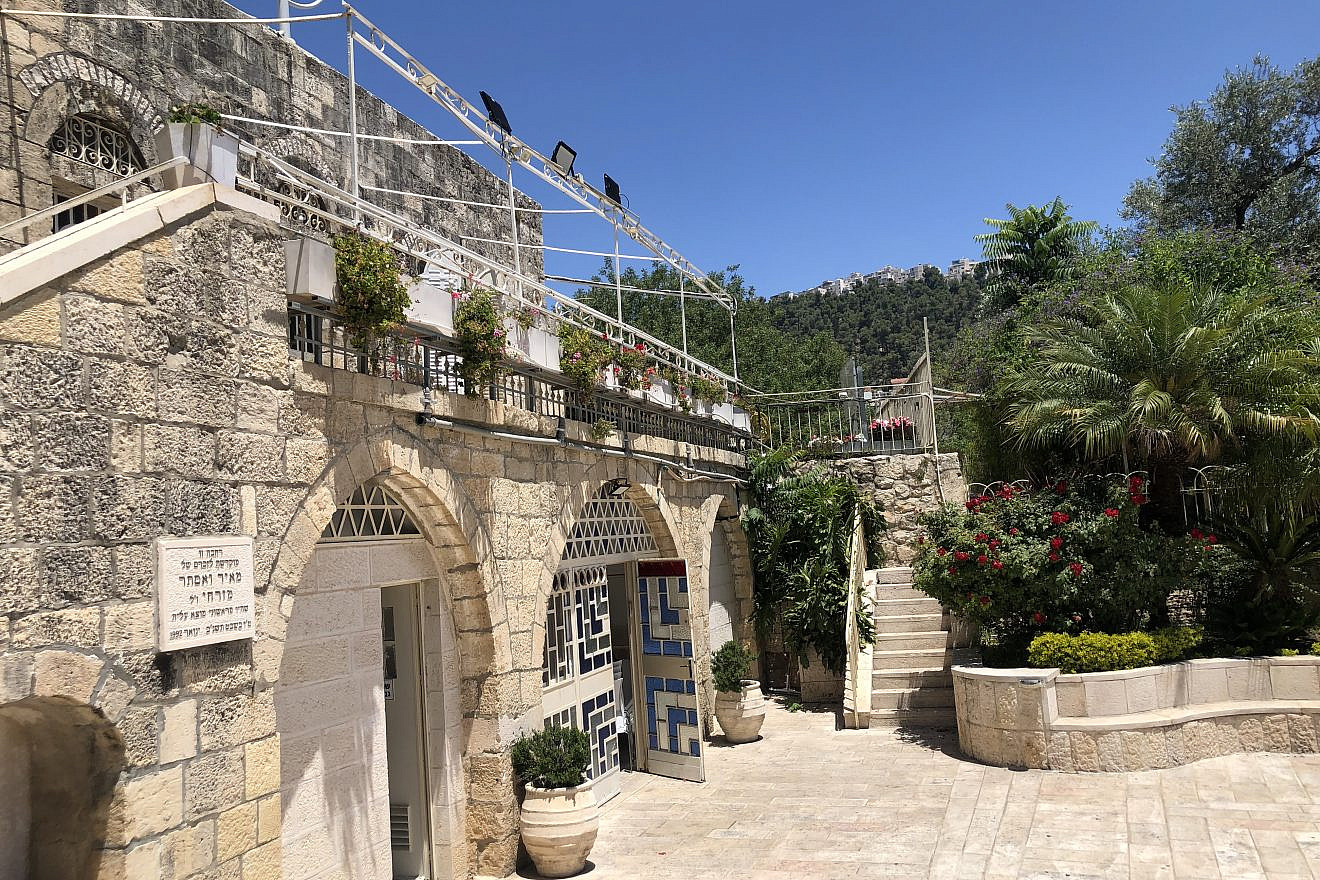The roof of Beit Yellin is barely visible to the cars zooming down the main Jerusalem-Tel Aviv highway. Most of those passing by probably have no idea that the cluster of restored 19th century stone buildings nestled among the trees in the green valley at Motza are symbols of the beginning of agricultural settlement in Israel.
That’s a situation the Society for Preservation of Israel Heritage Sites is working to change. Beit Yellin is one of around 200 sites managed by the independent NGO that fall under the category of being significant to the history of the founding of the state and in need of preservation.
Some are large, well-known places like Ammunition Hill in Jerusalem, Ben Gurion House in Tel Aviv or the Visitor Center at Deganya, the first kibbutz. But the majority are lesser known, fascinating spots that, like Beit Yellin, fill in the gaps of our understanding of what it took to establish a thriving Jewish state.
Over the next few months, JNS will take you to some of these tucked away sites that tell the story of the modern Zionist movement.
“Each one of these places is a piece of the puzzle that makes up the State of Israel,” Shahar Hermelin, spokesman for the SPIHS, told JNS on a recent visit to Beit Yellin.
“Today we take the state for granted,” he added. “It’s only when you go to these sites that you understand what our predecessors went through to make a state.”
Hermelin shared a surprising fact: There are strict laws that protect sites in Israel that existed before the year 1700 and fall under the jurisdiction of the Israel Antiquities Authority, but no laws that govern how heritage sites created after that should be preserved.
Anything built after 1700 may also be considered historic but falls under Israeli zoning laws rather than Israel’s Antiquities Law.
That’s where the SPIHS steps in. Since the founding of the organization by a decision of the Knesset Education Committee in 1984, its overall brief has been to prevent the demolition and promote the physical conservation of buildings and heritage sites and to raise awareness of the importance of preserving Israel’s cultural heritage.
But because of the lack of legal recourse, the road to identifying and restoring a culturally important site is not always simple. Hermelin explains that unlike the Israel Antiquities Authority, the SPIHS has no inspectors and no real authority. Sometimes a developer will wait until a historic building disintegrates and then they’ll try to jump in to buy the property, according to Hermelin. “All we can do is contact the municipal authorities and raise hell,” he said.
Today, the SPIHS is independent and partners with JNF-USA, which provides funds that contribute to the rehabilitation and preservation efforts and enhance the visitor experience at many sites. JNF-USA members also serve on a joint committee with SPIHS personnel to choose which projects to improve and rebuild.
At Beit Yellin the restoration started in 2006, when the SPIHS together with Yellin family descendants decided to save the home built by the family in 1890. By 2009, thanks to a donation from New Yorker Leonard Kahn and input from JNF-USA, the conservation work was completed, and a Visitor Center opened its doors.
Agricultural terraces were restored, fruit trees and vegetation were replanted, but in accordance with the wishes of the Yellin family nothing was altered in the main house, only restored. Now visitors can tour the home and view a short film about the area and the pioneering family, explore the surrounding grounds and the synagogue and enjoy the home-baked fare at the family-run Café Alloro that occupies a pastoral space in one of the restored buildings. There are also organized activities based on ancient local crafts for kids with advance booking.

The Yellin house was built during the period when the Jews who were crammed into the confines of the Old City began to think about leaving Jerusalem despite the dangers and difficulties of life outside the city walls.
Yehoshua Yellin and his wife Sarah decided to move out on their own, fulfilling a vision to create a Hebrew colony in the Judean hills and build on land purchased by his father and father-in-law a few decades earlier.
The Yellin house and a khan built to service travelers and merchants plying the Jaffa-Jerusalem route formed the nucleus of what eventually became a community of dozens of enterprising Jewish families. It was a first foray into private entrepreneurship, industry and agriculture.
The Yellins discovered a Crusader structure beneath the khan building that was later converted into a synagogue. They planted orchards and vineyards and tried their hand at a roof tiling business. Yehoshua died in 1924, but the community continued on until several Jews were killed during the Arab riots of 1929.
Hermelin relates that there’s also ancient history at Motza. The Mishna mentions that willows from Motza were used in the Temple during the festival of Sukkot, and recent excavations on the grounds have uncovered the remains of an early Israelite period temple.
Theodor Herzl stopped at Motza in 1898 on his way up to Jerusalem and was apparently so impressed by the fruit and olive trees, the grapevines and the Jews who had made it happen that he planted a cypress tree on the hill there. For years after Herzl died in 1904, Zionist youth made a pilgrimage to the tree on the anniversary of his death.
The tree was cut down by the Turks in 1917, but a new community called Motza was established further up the hill from Beit Yellin that today is thriving and expanding.


























